Yoga teacher training in India can be a perfect choice for many travelers. In the land of countless enlightened sadhus and yogis, where the very essence of mindfulness and inner peace first blossomed. There’s no better place to start your yogic journey than the birthplace of the yoga practice itself – India. My own transformative journey in this realm began in Rishikesh, known as the yoga capital of the world. Completing a 200 hour yoga teacher training here profoundly changed my life, inspiring me to create this guide for your own journey into the beautiful and transformative world of yoga. In this article, I’ll share how it changed me, how it can change you, how you can do it and whether it’s worth doing.
Choosing The Best Yoga Teacher Training Course & Why I Chose Mine
I completed my 200-hour Yoga Teacher Training Course at Jiva Yoga Academy in April 2023. The course was for 24 days and I paid $1480.
I had a specific goal in mind for my yoga journey – a program that incorporated traditional Hatha yoga, Ashtanga, Vinyasa yoga and higher knowledge about Mantras. Equally important to me was a small group setting, as I find it easier to focus and connect in environments that provide more space for personal guidance. This combination wasn’t easy to find, as many yoga institutes offer courses with larger groups of 20 or more students. Fortunately, I found this course that met my primary criteria, had positive reviews, and came at a more affordable price compared to other options I explored, making my decision to enroll an easy one.
To choose the right course for you, find the requirements that you find important in the course. Some things you can ask yourself are:
- What yoga style do I want to indulge in?
- Yin Yoga
- Traditional Yoga (Hatha)
- Yoga Nidra
- Vinyasa Flow Yoga
- etc.
- Do I like bigger or smaller groups?
- What kind of area is the yogshala (yoga school) located in?
- Besides yoga, are there other subjects I’d like to learn more about? Ayurveda? Meditation?
This way, you have some guidelines and can specifically look at the courses offered, and tick off the ones that don’t fit your requirements. I personally made a list with everything I wanted the course to have and ticked off all the yoga schools in India, that didn’t meet the requirements until there was just one left.
The Yoga School Itinerary
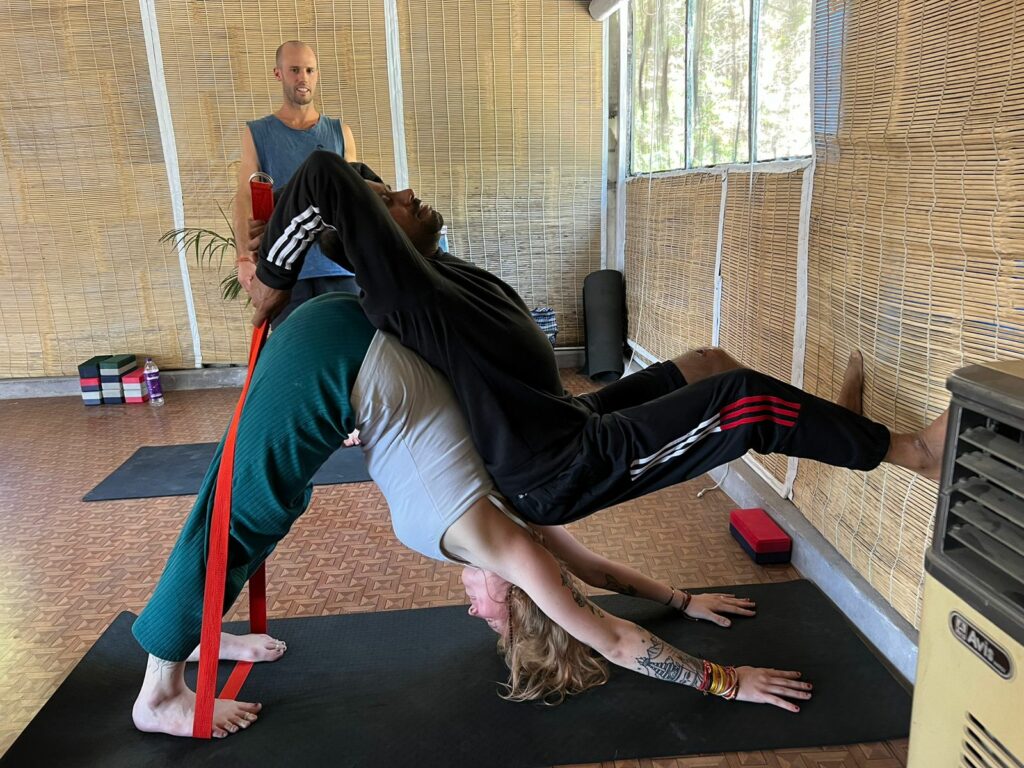
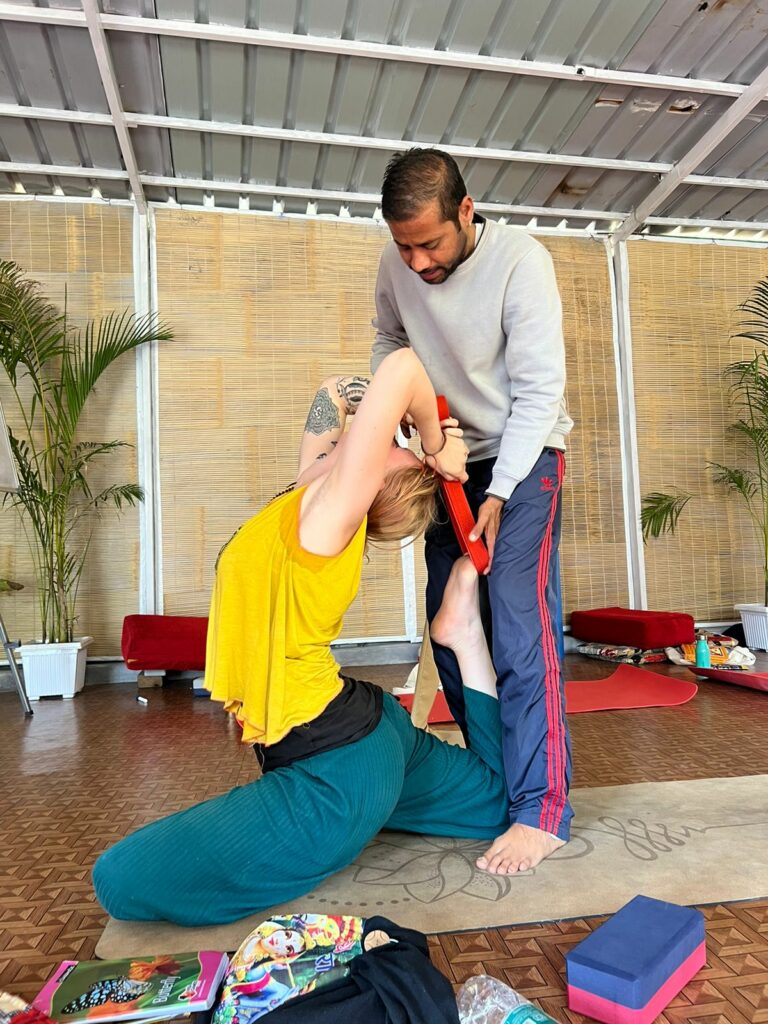
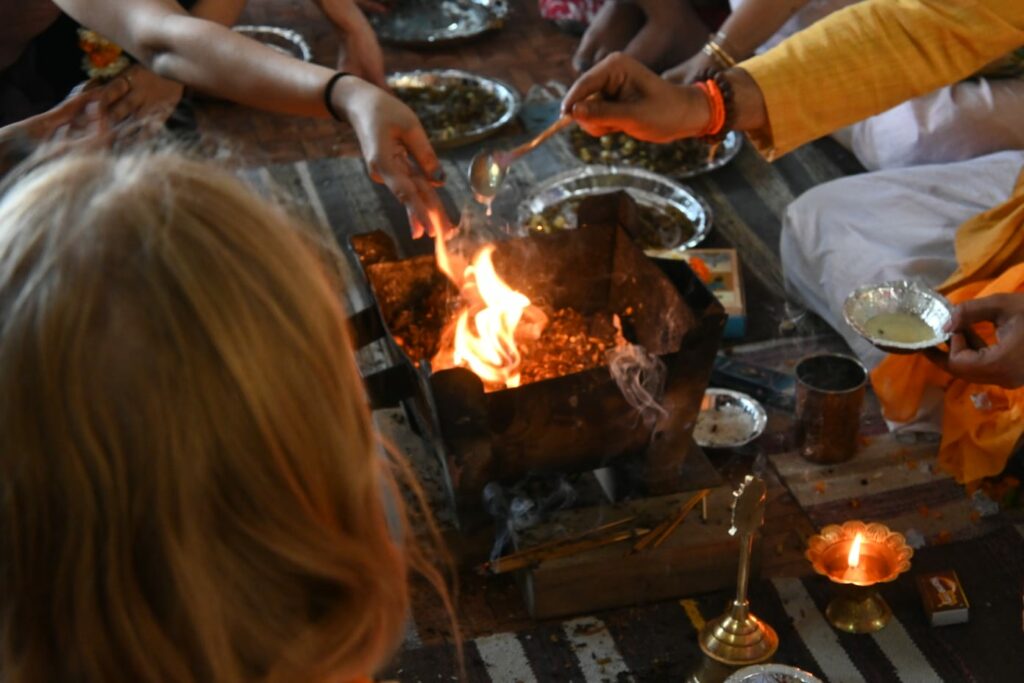
The courses I participated in included asanas (yoga postures), Ayurveda, Pranayama, meditation, yoga philosophy, mantras, basic yoga anatomy, holistic healing, and alignment classes. There were two yoga forms taught – Hatha and Ashtanga yoga alongside traditional yoga. We learned about the philosophy of the eight limbs of Patanjali. One unique thing about the course I opted for was the two holistic healing sessions, which were given by gifted Reiki masters.
There were two yoga teachers – Pankaj who taught us Hatha, and Vikas who taught us Ashtanga. Pankaj had been teaching yoga for about eight years and Vikas for around 10. Both had E-RYT 500 certifications, which means they had completed their 500-hour yoga teacher training from a school registered by the Yoga Alliance, and master degrees in yoga.
My yoga and meditation teacher – Swami Ramchrit Das – was quite a special one. He started Bhakti yoga (devotional yoga) when he was just nine years old. He came to Rishikesh, and met his guru (teacher) who taught him everything about meditation and yoga. He had been teaching meditation for more than 25 years, and had even lived in a cave in the Himalayas for two years, completely away from civilization, to focus on his spiritual journey. His stories about this time were incredibly fascinating, and he really had a very fascinating aura surrounding him. He has a master degree in yoga, a Bachelor degree in Sanskrit, and is currently still doing his master degree on the science of yoga.
Preetam was our Pranayama teacher, with a Master Degree in Yoga as well. He taught us how to do certain Kriyas (cleansing techniques), and was incredibly kind, always making us feel comfortable and helping us push ourselves over fear.
Lastly, our Ayurveda teacher. Dr. Vipul Arya, has a PHD in Ayurveda, master degree in Yogic Philosophy, with a doctorate in yoga sciences. He knew a lot and really made it much easier to understand the basics of Ayurveda.
All my teachers were incredibly skilled and really seemed to know how to help their students understand the yoga asanas, philosophies, or any other questions or topics we would struggle with. They were more than just teachers, as they often came and sat with us after the classes to genuinely ask how we were doing, or to provide further information and details about their experience. Personally, I appreciated that a lot.
The Daily Schedule for Yoga Practice
The daily yoga teaching schedule in India:
- 6:30 – 7:45: Hatha Yoga
- 7:45 – 8:15: Pranayama
- 8:45 – 9:15: Breakfast
- 10:30 – 11:30: Adjustment class
- 12:00 – 13:00: Philosophy
- 13:00 – 15:30: Lunch and Chai
- 15:30 – 16:30: Anatomy
- 17:00 – 18:15: Ashtanga Yoga
- 18:30 – 19:30: Meditation
- 19:30: Dinner
- 22:00: Lights off and sleep
The course started with a ceremonial fire named havan and a flower mala. This is a specific process aimed at the refinement of the subtle energy existing in matter, incorporating the power and intent of specific Vedic mantras to bring about purification and healing of not only the individuals in attendance but also the environment. There were two pandits (priests) who visited our yoga classroom, and all of us performed the ceremony to initiate ourselves into the course. See it as a sort of an official start of the transformational journey you’re about to embark on. After this, we received our yoga mats, books, and kriya equipment.
We were a group of around eight people, but two people did half the course, and so we ended with a group of six.
The first week and the last one were the toughest ones of them all. The first week was incredibly hard as we had to get into this new schedule, wake up at 6:00 AM, and start practicing ‘hardcore’ yoga techniques. Getting up so early in the morning was challenging at first – as I suspected before starting the course – but later turned into regular schedule, and was no longer that much of a problem.
I was personally into yoga even before this course, but definitely didn’t do it every day or even regularly, and surely not as intensely as we practiced here. The muscle pains were so bad that at one point, I started running a fever because of them. Luckily, another student was carrying protein powder with him, which certainly helped with the pain quite a bit. I’m pretty sure that without it, I would have never gotten this far, as the muscle pain was bad and left me in complete agony at the end of my sessions every day. the course itself was incredibly challenging at some points.
I had never done Ashtanga Yoga before, and god it was tough. The teacher made us hold our positions for long periods sometimes, and if we were about to give up, we’d have to do another round all over again. In the first week, I noticed that I really hated it and was getting quite discouraged by that feeling. Further down the course, however, I appreciated when he pushed me further because it showed me that the earlier difficulties were just because things got hard, and not because it wasn’t possible or too much to handle.
When you start to observe your thoughts and realize that when something is tough, you tend to jump into a negative mindset, you can go much further and change it. That’s exactly what happened to me, and I started to love it when the teacher would see that I was losing motivation and came over to push me a little further. And don’t get me wrong, he would never ask me to cross my physical and mental boundaries, but would always invite me to just go a bit further and motivate me to take it as far as I possibly could.
This was another reason why I used to love the adjustment classes,. In these classes, the teacher adjusts your pose and pushes you a bit further into the pose, or corrects you to improve your alignment. These classes would sometimes be very painful, but also incredibly rewarding when you saw the end results. We used to take a photo of our pose before and after the adjustment, and a significant change could be seen.
The last week was very tough, as we would do yoga almost six hours a day, practicing our teaching methodologies and those of the other students. The body would be very tired and painful because of the amount of stretching and excessive amount of yoga postures. However, in the end we got rewarded with the certificate that was completely worth it.
Overall, these challenges were just temporary and actually just proved that just by doing these exercises diligently and following the classes with utmost attention and involvement, we could get much stronger than we were – physically as well as mentally. I wouldn’t have wanted it to be any different than it was, even though when I started the first class, I really thought that this was going to be the end of me. It actually proved to be the beginning.
Location, Immersion & Accommodation
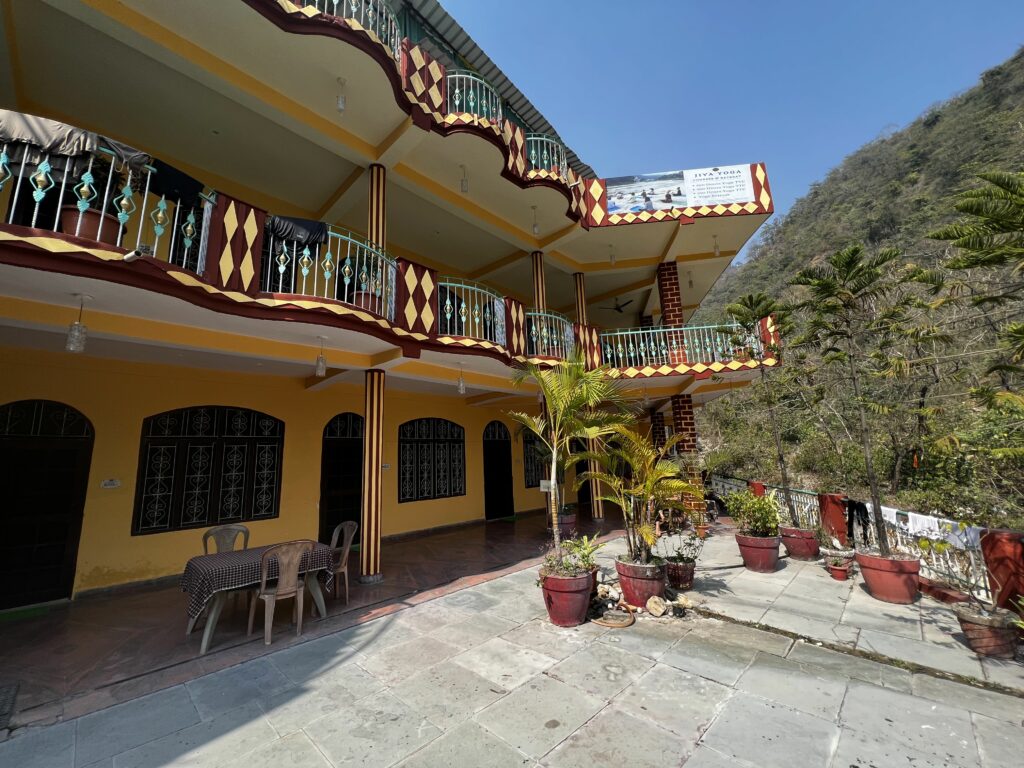
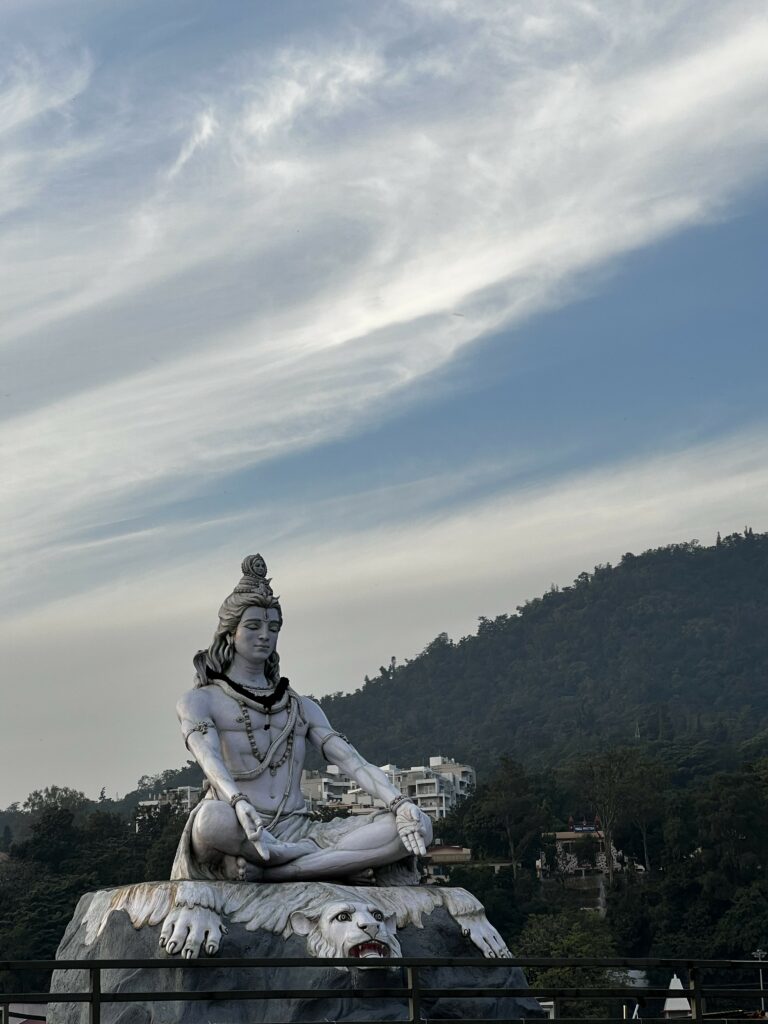

My yoga school was located in Rishikesh. I really believe that Rishikesh is THE city to complete your yoga course, especially if you’re into the spiritual aspects of it as well. It’s believed that in this city, yoga first came to life. It’s located at the foothills of the Himalayas, where many beings have gotten enlightened and where numerous yogis still search for liberation. The holy Ganges river flows through the town, adding to the serene atmosphere of the city. Because of the many spiritual aspects surrounding the town of Rishikesh, many yoga schools and retreats are based here. It’s considered a holy town, hence eating meat is prohibited.
Personally, I’m very much into spirituality, and so it was very important to me that I undergo this journey in a place that encourages spiritual growth. I felt that a teacher training course in Rishikesh was destined for me, and I ended up choosing to do the course here.
I can say that now, I don’t regret that choice. Almost everyone you come across in this city is doing some sort of sadhana (spiritual practice) and you’re always surrounded by people who are on their own spiritual journeys, which helps as a motivation and makes it easy to connect with like-minded people.
The accommodation provided was basic, but good enough. The beds were quite hard, so that might be good to know. We did have our own private washroom, though, and the rooms were very spacious. You’d also get a closet to keep all your clothes in, which was very nice, especially if you’ve been living out of a bag for a long time. In front of the rooms, we had hammocks to sit and tables to study on, with a view of the jungle right in front where monkeys often came to say their hellos.
One negative point was the food. It didn’t taste good most of the time. I don’t think it was completely sattvic (a healthy diet which most yogis follow to enhance their yogic lifestyle), even though they did claim it on their website. I solved this by buying some of my own food items from the many organic stores nearby. It was still quite a bummer, as I did pay for the food in the package and still had to go out and buy my own.
Sometimes it would get a bit chaotic, as there were some students in the group who didn’t always take the course seriously, which affected other students. They’d come back to the ashram late at nights, be loud, or arrive too late to class in the morning, resulting in the rest of the group getting interrupted or waiting to start until they arrived. When some of us mentioned this to the teacher, they took it a bit more seriously, but I personally felt that this part could have been handled a bit better by the ashram. Other than that, it was well organized, we would get a schedule for each week, and had a WhatsApp group in which changes or announcements would be made, if there were any.
Overall, it did give me the transformation and experience I was looking for. I really felt like I was home, with people I truly connected with. It felt like a safe space to release, and to grow. Money-wise, I felt that it was a bit more expensive than it should’ve been, based on how basic the rooms were and how the food wasn’t anything special, neither was it that good. Important to note, the Indian nationals enrolled in the same course paid much less than the foreigners.
How Do I Become A Yoga Teacher in India?
To become a certified as a yoga teacher in India involves completing a Yoga Teacher Training (YTT) program. It’s offered according to duration – there are options for 200, 300, and 500 hours. Once you’ve done the 500-hour YTT, you’ll have a 500 E-RYT degree, which is the highest level a yoga teacher can attain.
To make sure that you’re a certified yoga teacher all-over the world after completing your YTT, it’s incredibly important to make sure that the yoga school you opt for is recognized by the Yoga Alliance.
Upon completing the course, you’ll get a certificate with the amount of hours you’ve done. The cost varies widely based on multiple factors like location, duration and facilities. The cost of a 200-hour YTT in India can range from $1000 to $3000. Accommodation and meals may or may not be included, so factor those into your budget.
Regardless of what you choose, I’d highly recommend Rishikesh as THE place for your transformative journey, Goa and Dharamshala are two other beautiful and serene places to complete your YTT. Goa lies on the west coast of India, with beaches, hippie vibes, and a variety of western influence. Dharamshala is the home of the Dalai Lama, and is famous for its Tibetan Buddhism and multitude of Tibetan monasteries.
Rishikesh is a good option for you if: You’re interested in Hinduism, the Ganges, and its rituals. It’s more of a traditionally-Indian approach to yoga.
Goa is a good option for you if: You feel most at home at the beach, would like a more western-oriented environment, and love yourself some hippie/Ibiza vibes.
Dharamshala is a good option for you if: You’re interested in Buddhism, Dalai Lama’s teachings, and like to be surrounded by high snow-capped mountains.
Some reliable websites you can use to find the perfect yoga school for you:
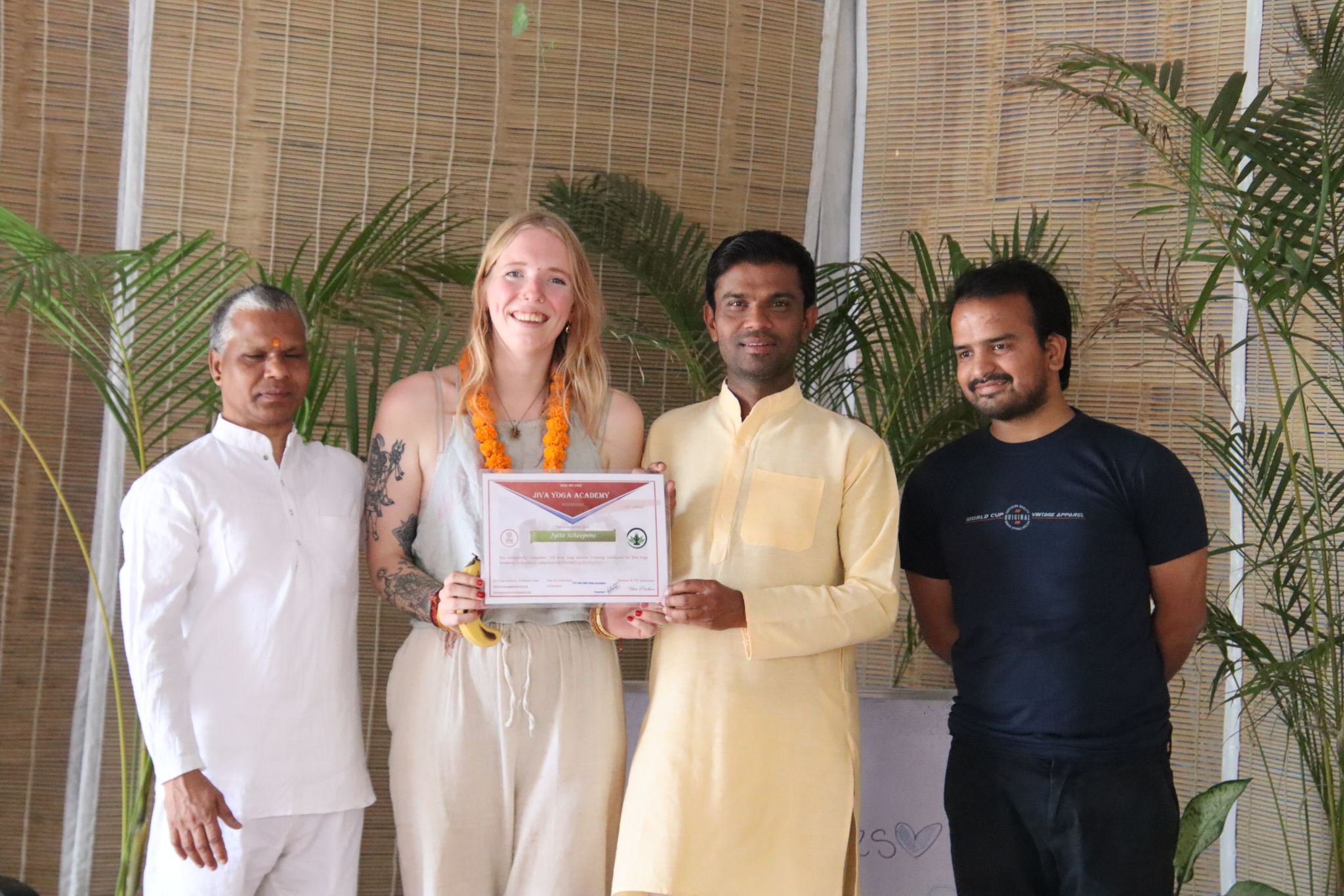
What Are The Benefits of Doing A Teacher Training Course in India?
Personally, I never thought that it would bring me as much as it actually did, and you might not, either. So, let me break it down for you.
Employment opportunities
After completing your course, you are now officially a registered yoga teacher. During the course, you learn yoga, and how to teach it with a variety of methodologies. I personally started teaching online yoga classes after I completed the course, and plan to further expand that in the future after completing the longer 300 hour training. One could already do this even with the 200-hour YTT certificate, but I personally want to delve deeper and receive more yoga education to develop myself even more, before I take teaching more seriously.
Health & Wellness
Yoga’s main focus is one’s health and well-being. Throughout the course, you learn so much about how to stay healthy and develop a lifestyle with health as your main focus. This doesn’t mean that you can’t go for another hamburger if you want to, but it helps you get conscious about your decisions and learn the things you need to opt for and avoid to lead a healthier lifestyle. Not only that, it was during this course that I really saw the impact of my daily schedule on my body, for the better. You get a clearer understanding of what health really means and its overall significance in our lives.
Emotional Wellbeing
The eight limbs of Patanjali were created to help us transcend human suffering and reach self-realization and ultimate freedom. To be clear, ultimate freedom doesn’t mean being able to move around freely. No, it’s instead more about freedom from our own head and mind. Throughout this course, I learned how to better understand how the human mind works, the reasons why we do the things we do, and how those choice keep us chained to our emotional suffering, such as stress. Because of the course, I’m much more at peace with myself now, and it’s much easier for me to take a step back and experience life as it comes.
Spiritual Growth
I’ve noticed that the daily practice of yoga, meditation, and mantras have brought me to a whole different level of my own self. I was always a seeker, constantly looking for answers to the more profound questions of life, like what is life? Or who am I really? Thanks to the course and the tools that I picked up here, I’m no longer as lost as I used to be. I’ve found a connection both in my inner world and the outer one. I truly feel that it spiritually brought me closer to my true inner self, and it seems that now, things naturally come onto my path more often than they used to.
Personal Transformation
Before the course, I was a completely different person. I used to worry about the smallest things and take life for granted – as most of us do from time to time. I wasn’t conscious about the decisions I make and how they could impact my life. Through what I learned here, I’m now much more conscious of my own mortality, and now do much more in my days knowing that every day is a gift. Beyond the physical benefits, it has also brought me a sense of discipline, self-awareness, and profound connection between the body and the mind. This transformation has seeped into all aspects of life.
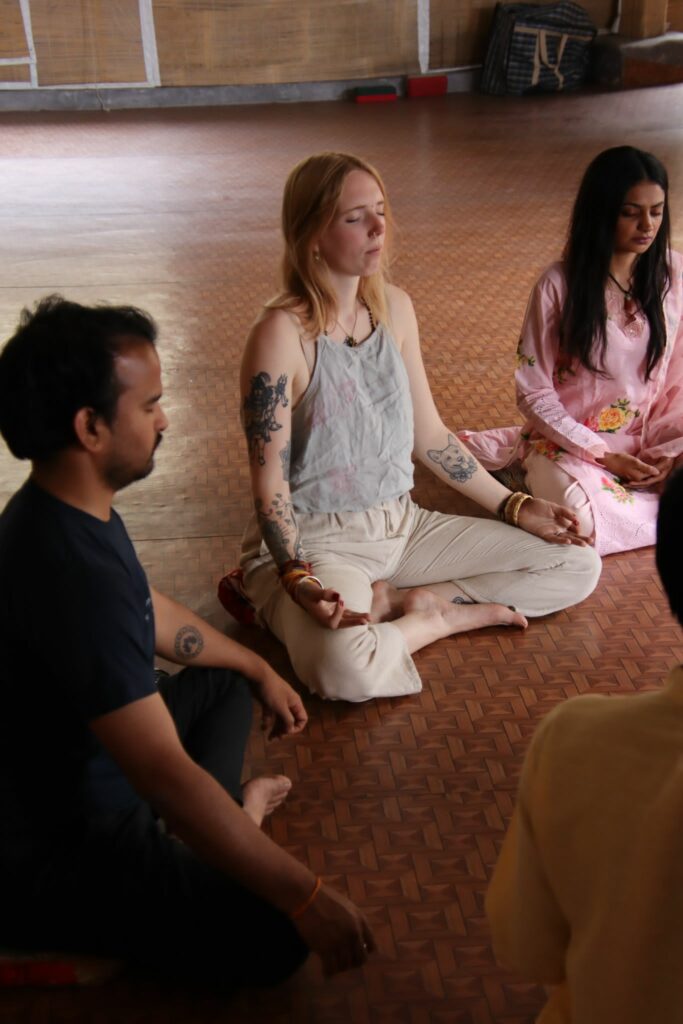
Things I Wish I Knew Before Doing A Yoga Course
When you’re starting such a journey, you can never completely prepare yourself for what you’re about to experience and achieve on the way. I knew it was going to be intense, but could have never guessed how intense it would actually be. Not just physically, but also mentally, where you’re really asked to face yourself and get confronted with your own thoughts.
Let’s talk about the physical aspect first. I wish I knew how much a body can hurt after doing such an intense practice before I came here – I would have been a bit more prepared if I did. Even though I had done some yoga before the course, that was a mild version of what I had to do at the ashram, and I never did it as regularly. Going from one hour of soft yoga in a week to three hours of hardcore yoga poses every day was quite a switch. When you’re about to start your yoga teacher training, try to already start doing yoga training daily. It will prepare your body in a better way, and you’d be able to grow even more than you otherwise would.
I’d also recommend taking some kind of electrolytes or protein powder with you, especially for the days that you really need it because, believe me, you’d need it.
Now for the mental aspect. It’s a peculiar combination of a grieving process for the old you that you’re about to leave behind, with the ecstatic feeling of being reborn with a new one. It’s an odd combination, and things can get incredibly tough because of excessive exercise and all the new information you learn, though it only brings you closer and closer to your own true self. It’s a time of great realizations, letting go, and releasing the pent up energies from your old self, which can be incredibly tough at times. I personally had a rough time with it in the beginning, but I luckily made the most incredible friend on the course with whom I could openly talk, get the support I needed, and share my experience through it all. That, along with the tools I learned in the course itself, turned me into the person I am today.
All I can say is, get ready to let go, and don’t be ashamed or too harsh on yourself, and you’d actually learn exactly how to let go and much more through the beautiful practice of yoga. As they say – breathe out and release.
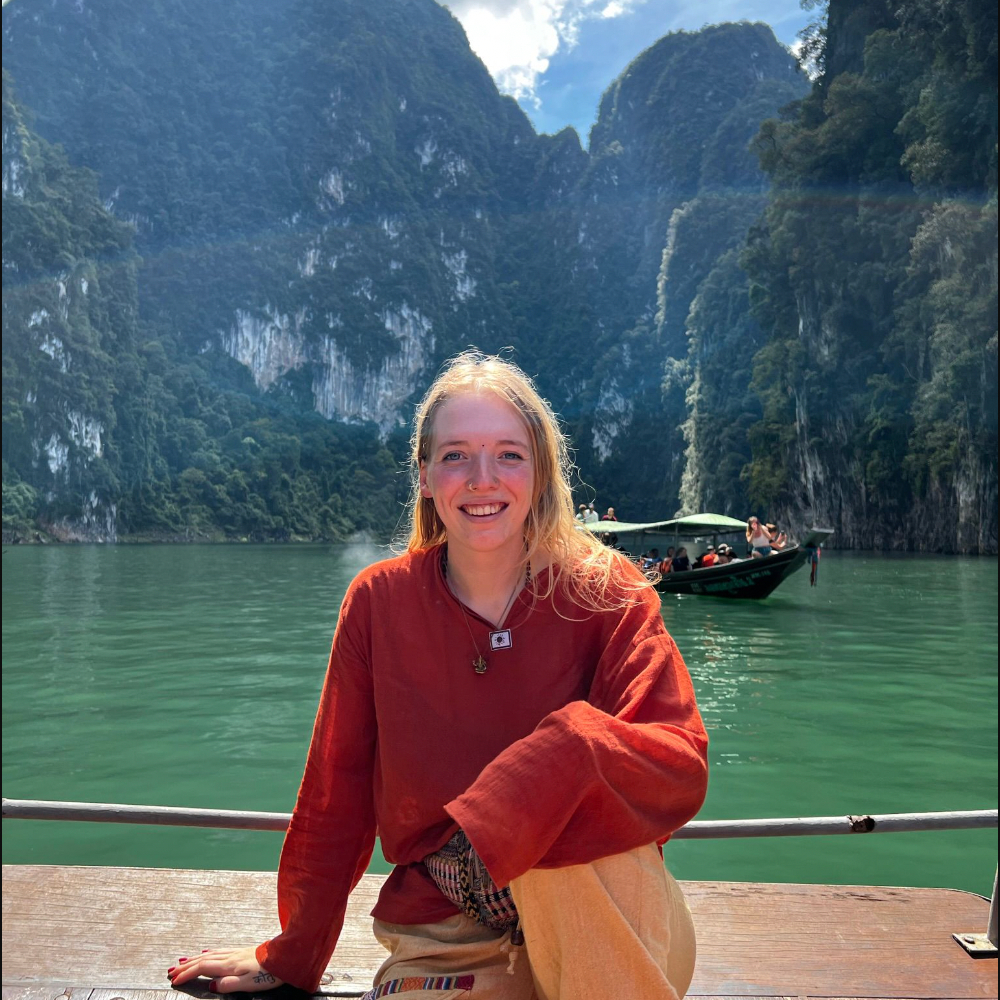
Jytte is a 22-year-old female adventurer from The Netherlands. She loves to fully immerse herself in the local ways of living, going ‘off the beaten path’ to truly experience the countries she visits and their unique way of life. Her wanderlust has taken her to Asia, with a particular focus on India. Here you’ll find her writing about all things India and Asia with a focus on digital nomadding there.
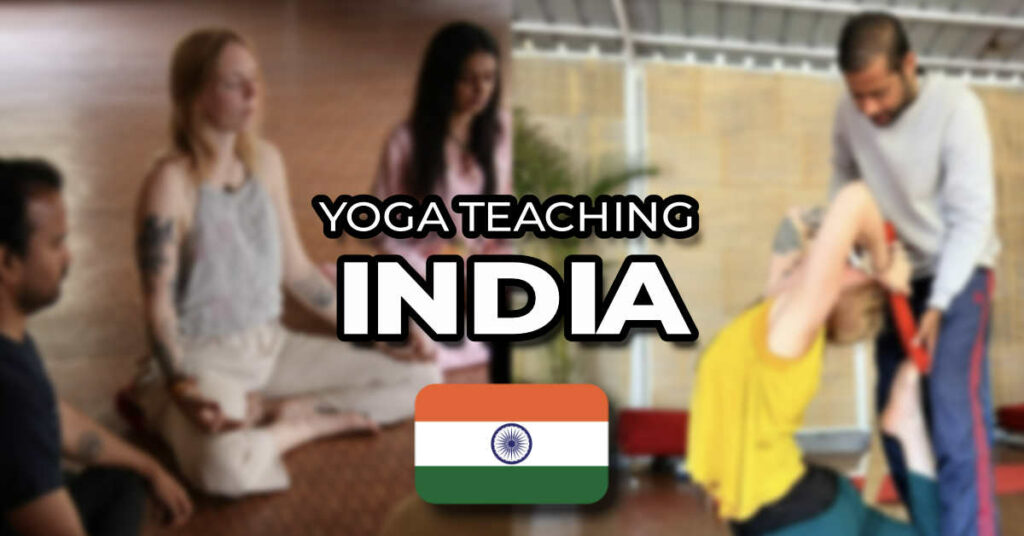
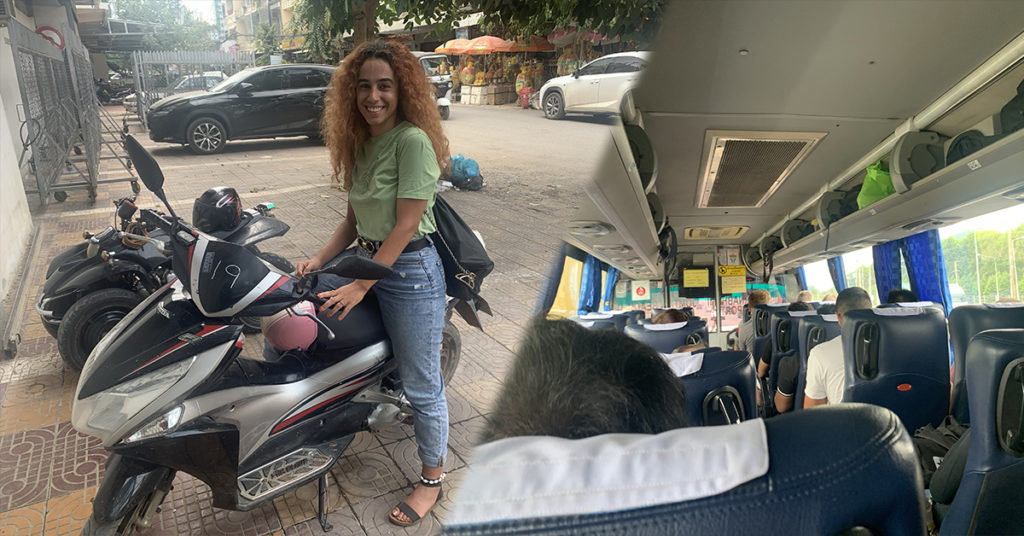

Thank you so much for this detailed and honest story! It was of huge help for me as I started planning my trip to a yoga center 🙏
Great, thanks for you comment Victoria! Wish you success, happiness and peace on your new Yoga journey 🙂